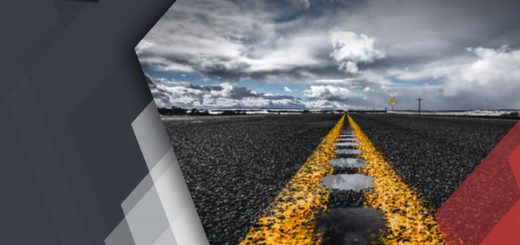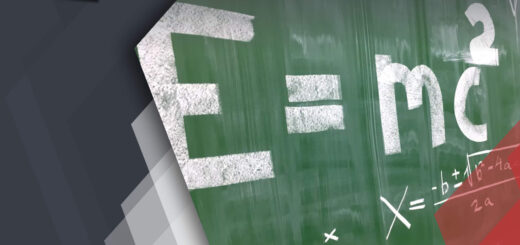How 3D Modelling Can Enhance Your Patent Drawings
Visual representation has the ability to effectively narrate a complex concept. Which is why drawings and illustrations are used to describe inventions while drafting patent applications. With the technological advancement, several computer-aided tools are being used to capture innovation in 3-dimension (3D) on a 2-Dimensional (2D) sheet.
This article is an attempt to highlight how 3D modelling helps to improve the scope of patent drawings, the problems that one may encounter when 3D modelling is not used, and the relevant solutions to tackle such issues. Let us begin by understanding the role of patent drawings and why they are used to describe inventions.
Table of Contents
Patent Drawings
They are a group of illustrations showing the detailed features of an invention and are submitted during the patent application process. These drawings represent the interactive and unique features of an invention. The purpose of patent drawings is to provide the examiner with enough information to understand precisely how an invention works. However, certain special rules and regulations apply to the drawings submitted with a patent application that must be adhered to.
Before proceeding to the problems that occur without the use of 3D modelling in patent drawings, it is crucial to understand its definition.
What is 3D Modelling
The term “3D modelling” is the process of creating a three-dimensional representation of an object using specialized software. This representation, called a 3D model, can convey an object’s size, shape, and texture. You can produce 3D models to describe product specifics as well as designs that haven’t yet been produced in real life.
You will better understand the significance of 3D modelling after getting familiar with the issues faced in the absence of 3D modelling.
Problems Encountered Without 3D Modelling
Without the use of a 3D modelling tool, patent drawings might not be able to represent complex innovations in the most descriptive manner. The problems that occur without 3D modelling are shown in Figure 1 below:

1. More Time for Drawing Preparation: In theabsence of 3D modelling, the drawings take more time to prepare. That is because inventors need to represent all the sections and parts of drawings with a limited capacity of 2D graphics.
2. Extra Time for Understanding an Invention: A drawing representation with 3D modelling, makes it easy for an examiner or a general observer to grasp the finer details of the invention. The same cannot be said about a 2D representation as it might not be able to represent the 3D concept of the drawing in a 2D perspective. Consequently, it may take more time, even for the most experienced examiner and observer to fathom the details of the invention.
3. More Time to Establish Consistency between Each View: Establishing consistency and relationship between symmetric views becomes easy with 3D modelling. For example, while explaining the invention in 3D perspective, drawings can be represented in a combination of top and bottom view, left and right view, front and back view, etc. This results in more clarity for the examiner and observer from a 360° perspective. However, in the absence of 3D modelling, the consistency between different views is hard to establish and comprehend.
4. Errors in Representing Same Parts at Different Angle in Different Figures: The tools and features available in 3D modelling make it easier to reproduce the same parts at different angles in different figures. However, replicating the same task is relatively more complicated in the absence of 3D modelling, thereby creating confusion in the observer’s mind while going through the drawing representation at different angles.
5. More Time to Prepare Exploded and Sectional View: Exploded diagrams explain how different components of a product can be assembled with dotted lines representing the point of connection. On the other hand, sectional views are used to represent interior construction of a part that is otherwise challenging to describe with hidden lines in exterior view. Both the exploded view and sectional view are critical to representing an invention’s uniqueness. Hence, they are best represented by 3D modelling. Without the sophistication of 3D modelling, it becomes difficult to capture the intricacies of the invention without a suitable representation of the exploded and sectional view.
6. Greater probability of Office Action over Consistency and Quality: Without 3D modelling, reproducing the desired representation of the product’s part/s becomes a stretching task. Moreover, it is also tough to capture the uniqueness of the invention. Any deviation from the actual product representation (that inventor wishes to show) creates ambiguity in the examiner’s and observer’s mind, leading to office action over quality and consistency.
Identifying the problems without 3D modelling is the right step before strategizing over its solutions. Therefore, let us discuss the solutions offered by 3D modelling in the next section.
Solutions with 3D Modelling
- The drawings take minimum time to prepare with 3D models.
- One can easily drag the required views of the invention from the 3D models.
- The inventions are better represented.
- One can describe the exact part of the invention without any missing lines.
- Maintains consistency between each view.
- Similar parts can be easily made from different angles in different figures without disturbing the uniformity.
- One can easily prepare exploded and sectional views at any required angle.
Merely knowing solutions with 3D modelling will not produce the desired result; it is crucial to know its practical implementation too. In the next section, we will discuss how Sagacious IP helped a client with its 3D modelling patent drawing service.
Case Study
A US-based inventor working in the machine tool domain was interested in filing their patent. The client wanted to file a design and a utility patent application for their new product in specific countries to move forward with the filing process. However, they had only rough diagrams and ideas of their invention. Therefore, the client was interested to know all the requirements for filing their application without any rejections.
Solution
Firstly, Sagacious IP’s Illustration team narrated the significance of design and utility patent application. Next, it suggested the client to write a patent draft or add patent drawings of their invention in the patent application while filing the patent.
In the process, the team also outlined the importance of drawings and suggested preparing a 3D model of the invention for a better understanding.
Finally, we explained how design and utility patent drawings with the use of 3D modelling for the client’s invention would strike the right impression with the examiner.
Outcome and Services
After understanding patent drawings’ importance, the client requested us to prepare 3D modelling of their invention. Our patent illustrators suggested our illustration services that take care of the drawings of design patent applications, utility patent applications, and preparing 3D models. Our familiarity with the patent guidelines of all countries and our proven expertise in 3D software such as Solidworks, Catia, Creo, etc., helped in providing the required support to this client. Finally, we shared our patent drafting support service with the client from where they get a draft of their invention.
Conclusion
From the above article, we can conclude that with the help of 3D modelling, we can effortlessly prepare neat and crisp patent drawings at the required angle. In addition, the desired result can be obtained with reasonably minimum effort and time. It also helps to maintain consistency and the quality of the drawings. Finally, it reduces the chances of receiving an office action by the patent office examiner. Therefore, although an in-house team can prepare patent drawing/illustrations with 3D modelling, it is better to outsource the task to a reliable third-party service provider who is an expert in this field.
Sagacious IP’s patent drawing/illustration services offer drawings, including 3D modelling that are drafted keeping in mind the patent drawing rules of the concerned PTO. Click here to know more about this service.
- Himanshu Panwar (Illustration) and the Editorial Team




